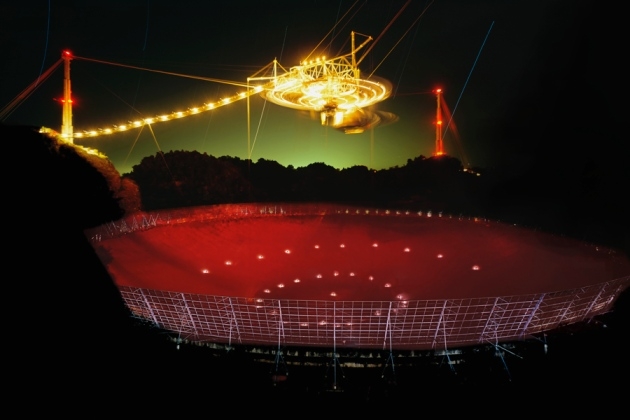Fresh confusion over origins of enigmatic radio-wave blasts

Louie Psihoyos / Corbis
The Arecibo Observatory in Puerto Rico, which has spotted the first example of a repeating fast radio burst.
One paper suggests that fast radio bursts can repeat, but a finding on the origin of another burst is in doubt.
Mark Zastrow
02 March 2016
Three reports within a week have astronomers aflutter about the puzzling origins of short, bright pulses of radio waves called fast radio bursts (FRBs).
Last week, astronomers said that they had1 identified the origins of an FRB for the first time — pinpointing the signal to a distant galaxy. And a paper published today3 offers a different clue to the origins of FRBs, which have baffled astronomers since they were first observed nine years ago. It reports the discovery of a repeating signal: a surprise because all 17 known bursts so far have been one-off blips.
But sceptics have questioned the first work, recording telescope observations within days of the announcement that cast doubt on the finding2.
Origin story
On 24 February, astronomers announced that they had identified the origin of an FRB in a galaxy 1.9 billion parsecs (6 billion light years) away, probably produced by a collision between two neutron stars1. A network of telescopes had scanned the area of sky in which an FRB had been picked up by the Parkes radio telescope in New South Wales, Australia, and had discovered a fading afterglow of radio waves in an elliptical galaxy. The odds of finding such a radio signal by chance were just one or two in a thousand, wrote the team led by Evan Keane of the Square Kilometre Array Organisation, which is headquartered at the Jodrell Bank Observatory outside Manchester, UK.
See full text